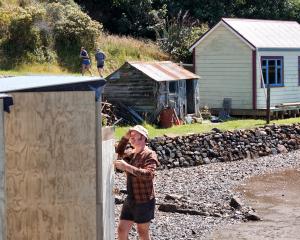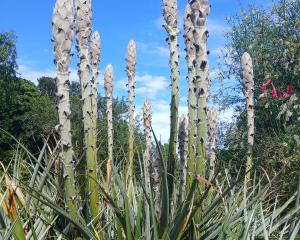In the second of an occasional series on garden history, Gillian Vine looks at the ornamental farm.
A remarkable survivor of an 18th-century style of gardening is Larchill, west of Dublin.
Its park and lake were developed as a unique adult playground in a form known as ferme ornee, or ornamental farm.
A short-lived blip in garden history, ferme ornee was at its height for perhaps 40 years from the late 18th century and in total lasted about 100 years.
Animals were housed in elaborate buildings that looked like castles or miniature chateaux and the most famous was Marie Antoinette's at Versailles, where the French queen dressed as a milkmaid.
Ferme ornee was a forerunner of the grand parkland designs of Lancelot ''Capability'' Brown (1716-83) and some Gothic-style ornamental farm buildings are reminiscent of the fake ruins and follies popular at the same time.
Follies still can be seen in almost every part of the world but ferme ornee is long gone, with Larchill one of the few surviving examples of the art, and undoubtedly the best.
Larchill's animal houses are the epitome of the style, with Gothic arches and battlements ignored by the rare pigs and chooks that live in this Arcadian paradise.
Some are Gloucester Old Spot sows, ''the oldest pedigree breed in the world'', says Larchill owner Michael de las Casas.
The house stands on a rise, from which there are fine views of the lake.
In Larchill's heyday, ladies would look down at their menfolk re-enacting some of the great naval battles of the era as the owners played out, with a patriotic twist, their dreams of country living.
It all started in the 1740s when a Mr Prentice, a wealthy Dublin haberdasher, bought the property and developed the land, including creating the 3.2ha lake.
The soil from the excavation was heaped in a mound on which a decorative spiral of beech trees was planted and a splendid avenue also dates from this time.
The Prentice fortunes declined and the property was taken over by the Watsons, who added other ferme ornee features, notably 10 follies, including a fort on Gibraltar, an island in the lake, and the famous Fox's Earth.
This structure, with tunnels through which foxes could escape, was said to be a shelter for Robert Watson, Master of the Meath Hunt, who, after many years of fox-hunting, feared he might be reincarnated as a fox.
Despite its historic importance, Larchill fell into disrepair and when Mr de las Casas and his wife, Louisa, bought it in 1994, it was a complete ruin.
The lake had been drained and sheep grazed in the 0.6ha walled garden, which had ''not a single plant except five trees''.
Fortunately, the walls had survived and were in good order.
Sadly, the ornamental dairy, begun about 1810, had been damaged, but some of its essence remained.
In one corner of the walled garden is Mrs Watson's Cockle Tower, with an original Victorian stained-glass window.
A pretty confection, the entire tower, even the floor, is lined with cockles and other shells.
They are the work of Mrs Watson, who chose more genteel pursuits than her husband and adorned the tower in the walled garden with shells laid out in geometric patterns.
She loved the three-storey tower so much that she was buried there but, when Larchill was sold out of the family, the new owners had her remains moved to a churchyard.
Locals claim Mrs Watson's ghost still returns to Larchill.
An old (c1700) statue of Nimrod, Noah's great-grandson who supposedly built the Tower of Babel, was moved from the lake to become a central feature in the walled garden, now planted in the style of Gertrude Jekyll, with broad perennial beds and low Buxus hedging.
Foliage plants such as hostas balance the bright line-up, in which spring bulbs, paeonies, sedum, primulas, lilies and lavender are among the selection that gives a succession of blooms.
Restoration of the walled garden and the follies took five years and Mr de las Casas even built a lime pit and slaked his own lime to ensure authenticity, something he described as ''a steep learning curve, as neither of us had done anything like it before''.
The couple's efforts paid off with a European Union environmental award in which Larchill pipped more than 170 other entries from 32 countries.
For the work they have done, they certainly deserve that recognition.
See it
For any gardener visiting Eire, Larchill is worth the 40-minute drive from Dublin to get an appreciation of one of the oddest pieces of garden history. Visit www.larchill.ie for directions and details of opening hours.












